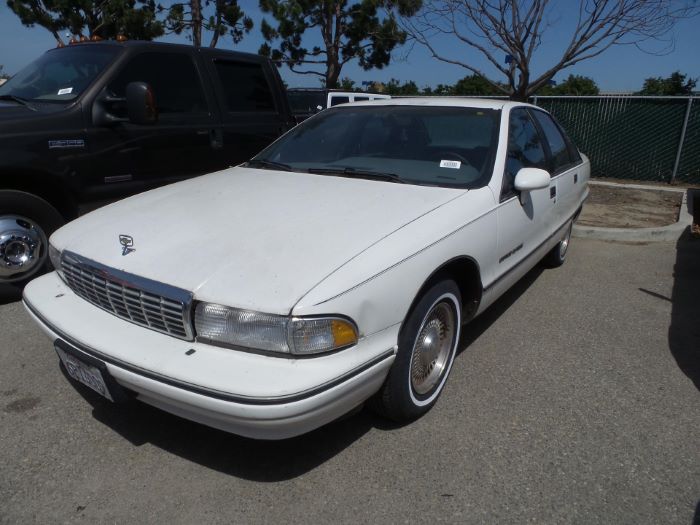

If you visited Epcot some time in the late 1980s, chances are you would have seen a car that was two-thirds Caprice and one-third deformed Cadillac.

This Voyage model was a harbinger of disaster for every single brand that tried to sell a luxury car, which by the late 1980s was pretty much every division GM had in North America.

By this time, GM was having one hell of a time trying to differentiate their cars. For every Buick Skylark, there was already a Skyhawk that also had to do battle with a Somerset, a Century, and at least 15 other GM compacts and subcompacts that constantly ran over each other’s hubcaps and $5 plastic wheel covers at thousands of GM dealerships. The once dominant General had been overrun by an army of androgynous accountants who had corroded GM’s powerful and stylish machines into hollow shell of rolling mediocrity.

This Caprice was a rolling embodiment of GM’s badge engineering gone awry. Underneath the $750 million redesign that had to span six different models, three brands, and two body styles, was a once great platform that had sold over 10 million vehicles since World War Two.

This march of Cold War era dominance was cut short by seven straight years of post-Soviet damnation for a car that simply couldn’t compete with any other full-sized competitor in the greater marketplace.

The then brand new 1992 Ford Crown Victoria along with its plusher sibling the Mercury Grand Marquis smashed the Caprice and its cohorts into a fine red mist in the marketplace.

It wasn’t much of a contest. Behind all the plastic and heavily amortized metal, the Caprice featured a tired old 305 engine that was just plain asthmatic with a numbed out 170 horsepower versus 210 tire ripping horsepower from Ford’s state of the art modular V8 engine. In real world numbers the Caprice realized a 0-60 time of 11.4 seconds. That was over two seconds slower than the Crown Vic. In fact, it was nearly two seconds behind the pace of a 1980s Crown Victoria.

While GM made do with interior appointments that put the plush back into its full-sized model line, Ford took it a giant leap further by featuring buckets, and a whole lot of thick leather for those who wanted a seat that could endure a life on the road.

Within a few short years GM would lose a heaping load of police business along with a retail trade that wanted everything but a molderized version of what GM had already been offering since the beginning of the Roger Smith era of the 1980s. With the exception of the Impala SS, the last generation of the Caprice was an unqualified failure that would result in the once best selling model being sentenced to GM’s purgatory of unused car names that once carried the day.

From Cutlass Supremes, to 88s and 98s, to Roadmasters and Caprices, GM was firmly in the back seat of almost every single market segment by the late 1990s. Cars like this 1991 Caprice did them no favors.
